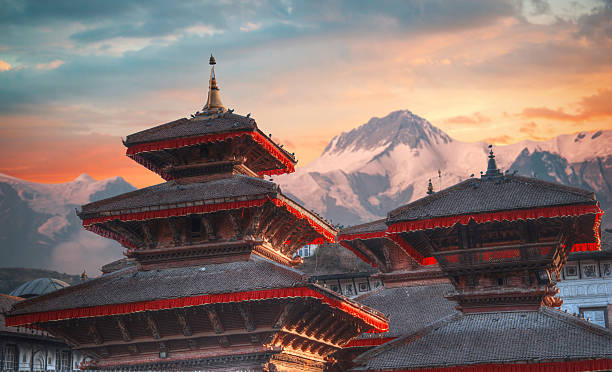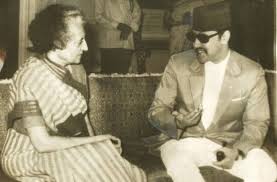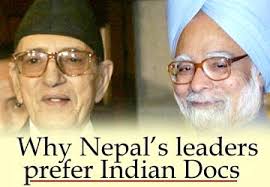
Dr. Peeyush Bhadviya
Nepal being the closest neighbor of India, shares a border of about 1850 km with five Indian states Sikkim, West Bengal, Bihar, Uttar Pradesh and Uttarakhand. The Himalayan country of Nepal lies between India and the Chinese territory of Tibet, hence good relations with Nepal are crucial for Indian security.1
The Republic of India and the Federal Democratic Republic of Nepal initiated the relationship with the 1950 Indo-Nepal Treaty of Peace and Friendship and accompanying secret letters that defined security relations between the two countries, and an agreement governing both bilateral trade and trade transiting Indian territory. Under the provision of this treaty both the government shall not tolerate any threat to the security of each other by a foreign aggressor and should inform each other of any serious friction or misunderstanding with any neighboring state, likely to cause any breach in the friendly relations subsisting between the two governments. The treaty also granted Nepalese the same economic and educational opportunities as Indian citizens in India, while accounting for preferential treatment to Indian citizens and businesses compared to other nationalities in Nepal. The India-Nepal border is open for Indian and Nepalese nationals without passport or visa and they may live and work in each other’s country. However, Indians are not allowed to own land properties in Nepal. While Nepalese nationals in India are allowed to work in Indian government institutions (except in some states) and some civil services (IAS, IPS, IFS). Moreover, Nepal could not import arms from third party without India’s consent.2

With India’s help Nepal transited from Rana autocracy to constitutional monarchy. Jawaharlal Nehru himself went to Nepal in June 1951 to cement the friendly relations between free India and the new Nepal that was emerging from the recent constitutional changes.3
Things, however, saw a downward slide in India-Nepal relations when king Tribhuvan passed away and was succeeded by King Mahendra. The new king showed autocratic gestures which resulted in fleeing of political leaders of Nepal to India. It further aggravated the suspicion about India in the mind of king Mahendra.4
King Mahendra did his best to arouse anti nationalism and play the China card as well. Demonstrations were held against India and King demanded that the international community ensure the rights of Nepal as a landlocked state. Nehru expressed sorrow at the erosion of democracy in Nepal but continued to pursue a moderate policy towards Nepal. King hoped to balance India with China and Beijing at that time was quite willing to play the game. Beijing began advancing substantial amounts of economic aid and some military materials to Nepal.4

Indira Gandhi continued with the soft policy towards India’s smaller Himalayan neighbour. She took an early opportunity of visiting Nepal in October 1966 and announcing the largest aid package until then. The joint statement issued at the end of her visit spoke of the traditional friendship which evolved due to history, geography, culture, territorial integrity, prosperity and well-being of each other and reaffirmed their commitment to the principles of non-alignment and peaceful coexistence.5
However, King Mahendra continued his different attitude. He called upon India to withdraw its military mission group, which was done in August 1970. He continued to use the China card, and declared that Nepal would remain neutral in any conflict between India and China and even invited the Chinese to build a road in the Terai areas, which was too close to the border of India. India was extremely anxious about the Chinese role in Nepal and worried about large-scale smuggling of goods from Nepal.
Nevertheless India continued to persist with a moderate policy and assist Nepal in various developmental projects. King Mahendra’s passing away in early 1972 and the succession by king Birendra brought relief to India- Nepal relations.  Mrs Gandhi went to Kathmandu a second time in February 1973 and was given a big ovation. She assured the Nepalese leaders of India’s interest in the development and prosperity of Nepal and of its disinterest in fanning any rebel activity against the Nepalese government.6
Mrs Gandhi went to Kathmandu a second time in February 1973 and was given a big ovation. She assured the Nepalese leaders of India’s interest in the development and prosperity of Nepal and of its disinterest in fanning any rebel activity against the Nepalese government.6
India’s role in the liberation of Bangladesh and the merger of Sikkim into the Indian Union and the emergence of India as a pre-eminent power in the subcontinent led to suspicion in the mind of the Nepalese ruling elite that the sovereignty and territorial integrity of Nepal might be challenged by India. In such a psycho fear atmosphere ,King Birendra in his coronation speech declared Nepal a “zone of peace” on 25th February 1975.7
 Janata government tried to improve India-Nepal relations. King Birendra became the first foreign and neighbouring dignitary to visit New Delhi after the Janata government was formed. The Janata government made an effort to build new structure of friendly relationship with the neighbours in place of Congress Government’s so called “big brotherly” posture; but there was no change in New Delhi’s position with regard to the “zone of peace”. A new treaty of trade and transit was signed on 25th March 1978 between India and Nepal which opened overland routes for the export of Nepalese goods to Bangladesh.8
Janata government tried to improve India-Nepal relations. King Birendra became the first foreign and neighbouring dignitary to visit New Delhi after the Janata government was formed. The Janata government made an effort to build new structure of friendly relationship with the neighbours in place of Congress Government’s so called “big brotherly” posture; but there was no change in New Delhi’s position with regard to the “zone of peace”. A new treaty of trade and transit was signed on 25th March 1978 between India and Nepal which opened overland routes for the export of Nepalese goods to Bangladesh.8
After Janata Government, relations between India and Nepal were reviewed in terms of latter’s linkages with China and Pakistan. An outstanding issue between India and Nepal at the time was “zone of peace”. This issue strained the relations between the two countries because Nepal made vigorous diplomatic efforts for a “zone of peace” proposal. King Birendra tried to get endorsement for his proposal when he claimed in October 1984 that some 44 countries had endorsed the proposal.9
India and Nepal were involved in SAARC from 1985, which boosted friendly relations between the both. In April 1989, following a dispute over negotiating lapsed trade and transit treaties with Kathmandu, New Delhi abruptly shut 19 of 21 borders crossing with Nepal, cutting of links to the Kolkata port, which served as the only sea outlet to the land locked nation as well as several North Indian cities. The 13 month long blockade had a devastating effect on Nepal’s economy. The reason for the strained relations between India and Nepal was that while the former wanted a single format, Nepal sought two links to distinguish between important transit rights from trade and commercial agreements with India. The twin accords were made as a result of concessions made by a previous government under Morarji Desai. However, the important reason may be buying Chinese anti aircraft guns by Nepal in August 1988.10
 The change of governments in both countries in mid 1991 opened new dimensions for the bilateral relations. A major breakthrough in India-Nepal relations was the conclusion of separate trade and transit treaties during Girija Prasad Koirala’s visit to India in December 1991.Various provisions of the treaty indicated concern of the two countries for the economic liberalisation and free market economy. India tried to accommodate Nepal’s economic interest as far as possible. The two countries agreed for the expansion of Tanakpur Project. The visit of the Nepalese premiere was reciprocated by Indian P.M. visit to Nepal in October 1992. He emphasized that the first beneficiary of India from liberalisation policy will be Nepal. His visit brought greater strength and depth to India-Nepal relations.11
The change of governments in both countries in mid 1991 opened new dimensions for the bilateral relations. A major breakthrough in India-Nepal relations was the conclusion of separate trade and transit treaties during Girija Prasad Koirala’s visit to India in December 1991.Various provisions of the treaty indicated concern of the two countries for the economic liberalisation and free market economy. India tried to accommodate Nepal’s economic interest as far as possible. The two countries agreed for the expansion of Tanakpur Project. The visit of the Nepalese premiere was reciprocated by Indian P.M. visit to Nepal in October 1992. He emphasized that the first beneficiary of India from liberalisation policy will be Nepal. His visit brought greater strength and depth to India-Nepal relations.11
When there was a change in government in Nepal in November 1994, it demanded repeal of unequal Indo-Nepalese Peace and Friendship Treaty. It intended to resolve Tanakpur bridge, trade and transit and security perception.12
The hijack of Indian Airlines plane on 24th Dec. 1999, opened loopholes in Nepal’s land by Kashmiri & Pakistani terrorists for making terrorist activities easily through Nepal. The whole hijack drama of Indian Airlines forced India to stop all its flights to and from Nepal which gave setback to Nepal’s tourism industry a lot. However, after prolonged talks flights were resumed in 2000.13
There emerged a new twist in India’s relationship with Nepal following the assassination of King Birendra in 2001.The new King Gyanendra Bir Bikram Shah was unfavourable towards India. Adding to it, there was a problem of Maoist elements, who had not only organised subversive activities in Bihar, Andhra Pradesh and West Bengal but also threatened the joint ventures in power generation.14
On 1 February 2005 King Gyanendra imposed emergency in Nepal and established monarchical government. India closed the military aid given to Nepal. In April 2005, India’s P.M. Man Mohan Singh met with King Gyanendra at Jakarta in Afro-Asian nation conference and urged for the reestablishment of democracy in Nepal. Due to the international pressure and strong opposition within Nepal, King Gyanendra established previous parliament on 24th April 2006. Maoist also took part in the interim government.
When the new P.M. of Nepal Girja Prasad Koirala visited India on 6th-9thJune 2006, India’s P.M. Dr. Man Mohan Singh offered package to Nepal which included (1) 100 crore aid in Nepal’s budget (2) 10 crore dollar for Infrastructure development (3) yearly aid increased from 65 crores to 150 crores. (4) 2500 tons of fertilizer (5) border tariff for import from Nepal was relaxed.15
On 21st November 2006, eleven years of Maoist violent struggle ended, when Maoists signed on peace agreement with seven political parties for formation of interim government. India welcomed this development in Nepal.On 28th May 2008, any form of monarchical interference ended after 240 years and Nepal was declared Democratic Republic.
India’s foreign secretary visited Nepal from 18th to 20th January 2011 and met with prominent persons and focused on improving bilateral relations. Nepal’s President Dr. Ram BaranYadav visited India from 27th January to 5th February 2011 and again on 22nd to 29th December 2012, which strengthened the bilateral terms.
In 2013 election of Nepal, India supported it in all possible ways. India’s foreign minister and foreign secretary visited Nepal in 2013, followed by visit of Army Chief in March 2014.16
After 17 years, the first bilateral visit by an Indian PM to Nepal in August 2014 galvanised relations between the two fraternal neighbours Thousands of Nepalese citizens descended onto the streets of Kathmandu amid heavy rains to greet P.M. Narendra Modi. In this historic visit, Narendra Modi touched the hearts of the Nepalese people and set new benchmarks to energise India’s multifarious ties with Nepal.

There were two landmark trips by P.M. Narendra Modi to Nepal in August 2014 and November 2014.There was a historic address by Narendra Modi to Nepal’s Constituent Assembly.
There was a revival of India-Nepal Joint Commission after 23 years by external affairs minister Sushma Swaraj in July 2014.
India announced an additional suppoprt of $1 billion to the Himalayan nation for road, irrigation and hydropower projects. Pact on electric power trade, cross border transmission inter connection and grid connectivity was signed on 21st October, 2014. Pact on fast-tracking the 5600 MW Pancheshwar Multipurpose Project was signed. Project Development Agreement (PDA) was signed for the 900 MW Arun III-Project and 900 MW Upper Karnali Project. India agreed to help build a Police Training Academy in Nepal to train over 400 police officers annually. India and Nepal signed the motor vehicle agreement. Bus services start on three routes: Kathmandu-Varanasi and Pokhara-New Delhi Emergency and Trauma Centre facility with 200 beds inaugurated in Kathmandu. It provided invaluable medical help after the April 25th earthquake.
Narendra Modi gifted a Bodhi Tree sapling from the Mahabodhi temple in Bodh Gaya to be planted near the Asoka Pillar at the Maya Devi Temple complex at Lumbini. Pact on sister city arrangement between Ayodhya-Janakpur, Bodh Gaya-Lumbini, Varanasi, Kathmandu Development of the Buddhist Circuit (Lumbini –Bodh Gaya Sarnath-Kushinagar) was made. In matters of security cooperation India handed over Advanced Light Helicopters ‘Dhruv’ Mark III to the Nepalese Army.17
Thus, the recent aids to Nepal from India’s side have blossomed the bilateral relation between the two countries. Both nations should enhance cooperation for greater economic integration by harnessing collectively the potentials and complementarities available in the region. The future relations should be inspired by historic connections, common culture, tradition, religion and the need of brotherly relations to foster all round development of both nations by mutual understanding and support.
WORKS CITED
-
Sharma, Prajjwal, RanaYashwant Singh, Sharma Mohit.2017. Governance, Constitution, Polity, Social Justice & International Relations, Arihant Publications, New Delhi, p.537
-
https://en.m.wikipedia.org>wiki>India-Nepal Relations
-
Dutt V.P.2015. India’s Foreign Policy Since Independence, National Book Trust, India, New Delhi, p.51
-
Ibid,p.51-52
-
Ibid,p.52
-
Ibid,p.52-53
-
Khan Nasim: India’s Relation with Nepal 1971-86(M.Phil.Dissertation), Department of Political Science, Aligarh Muslim University, 1996,p.55-56
-
Ibid,p.74,77,81,82
-
Ibid,p.100
-
http://www.oneindia.com>…>feature
-
Khan Nasim: India’s Relation with Nepal 1971-86(M.Phil.Dissertation), Department of Political Science, Aligarh Muslim University, 1996,p.157
-
Ibid,p.172
-
http://Indo-NepalrelationsintheNineties. Shodhganga.inflibnet.ac.in.>bitstream, p. 188
-
http://useful notes on Indo-Nepal relationship-www.shareyouressays.com>knowledge
-
essays on Indo-Nepal relation, www.politicalsciencenotes.com>essays
-
Ibid
-
Niraj Kumar: ’Foreign Policy of New India’, Civil Services Chronicle (Nov.2015),p.116-117







